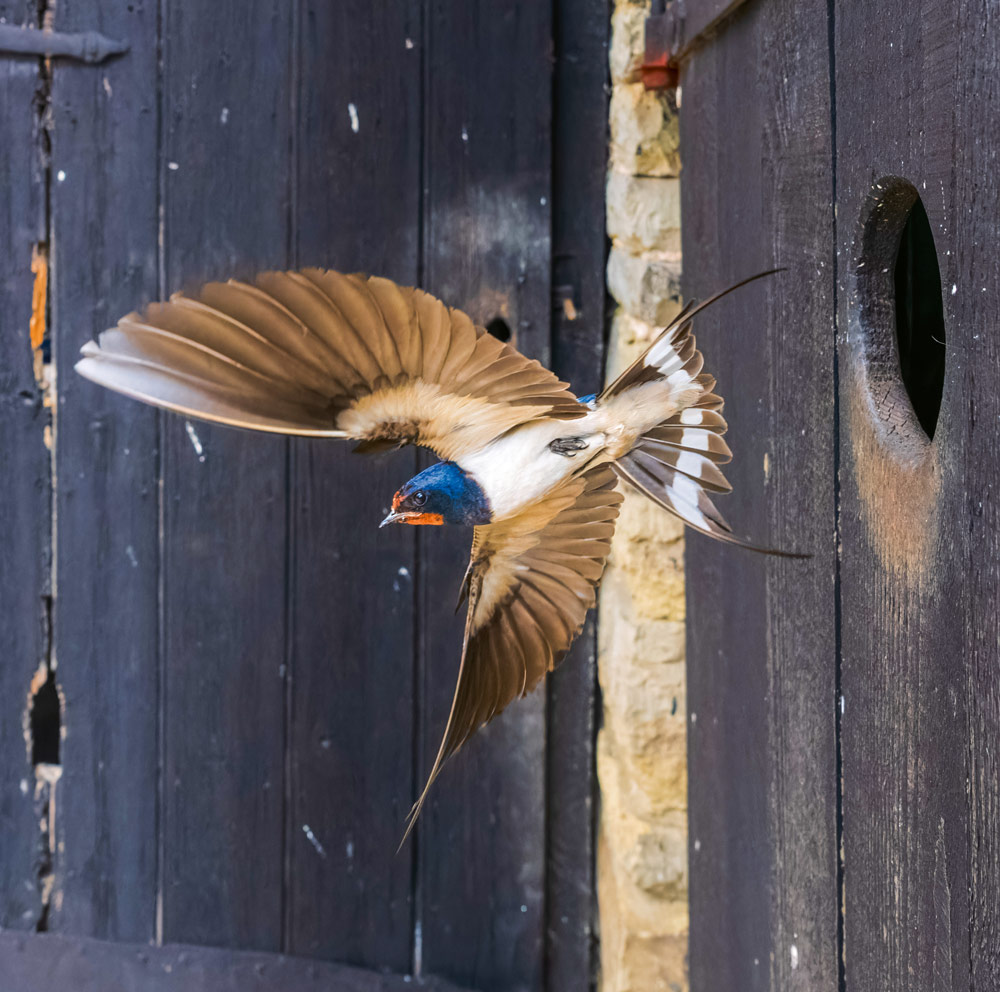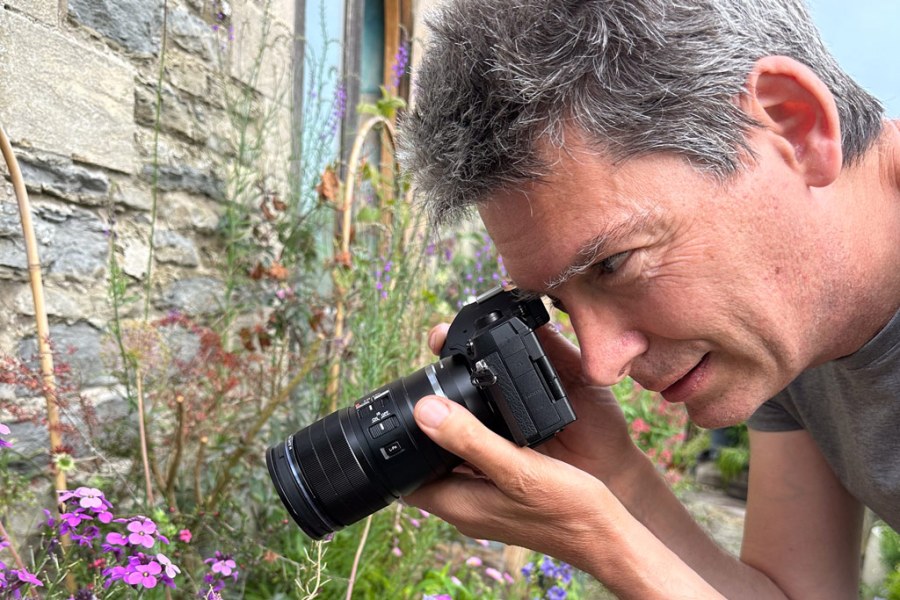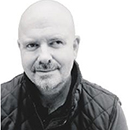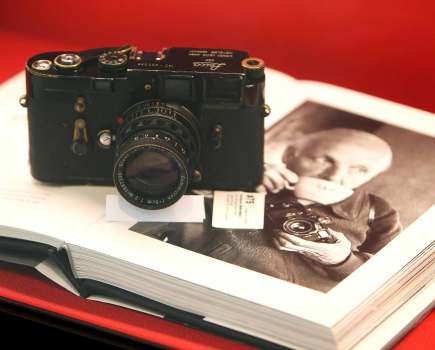One of the star speakers at our forthcoming Festival of Outdoor Photography is the celebrated wildlife photographer and OM System ambassador, Andrew Fusek Peters.
Formerly a successful children’s author, Andrew has carved out a distinguished career as a nature and wildlife photographer, and his images regularly appear in the national press. No other wildlife photographer appears in the papers so often.
Read on to find out more about Andrew’s latest book, Garden Safari, and why anyone interested in wildlife photography should attend his fascinating talk at the Festival of Outdoor Photography (get your discounted tickets here).
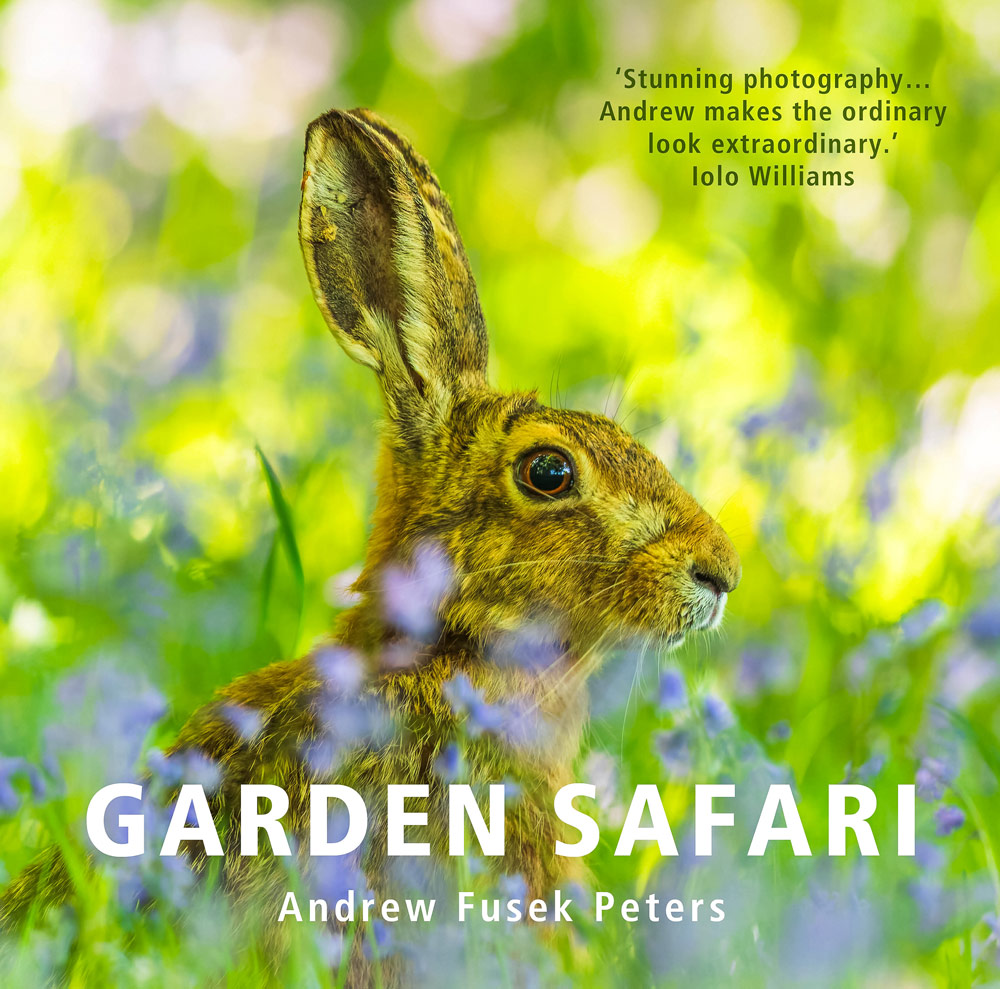
Garden variety
‘Garden Safari comes out on May 8th, and is my eighth photographic book – it’s the follow-up to Butterfly Safari, which did very well,’ Andrew explains from his base in rural Shropshire. ‘I was talking to my wife and it struck us that nobody had done a book like Garden Safari – in other words, a collection of wildlife shots taken in the back garden. As soon as I mentioned the idea to the publisher, they agreed and commissioned me. I didn’t even have to do a detailed pitch.’
Why does Andrew think this ‘local’ approach to wildlife photography hasn’t inspired a book before? ‘I think there is an idea amongst wildlife photographers that you have to go and photograph the ‘big five’ animals in Africa, or other exotic locations,’ he muses.
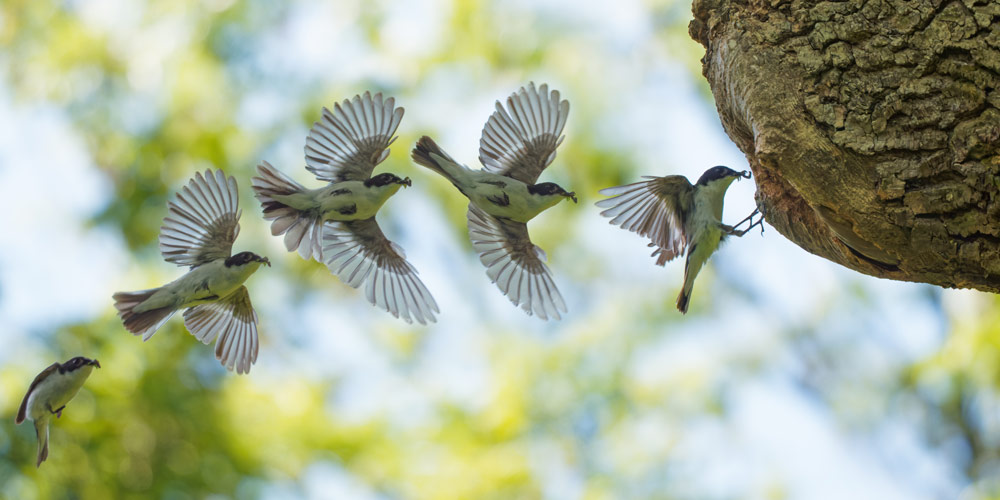
‘There is a slight snobbery about the wildlife under our noses here in the UK. Garden Safari features a decade of work, and it’s a reminder that what we have under our noses – in our gardens, nearby parks and local beauty spots – is really interesting and is worthy of study and celebration.’
Not forgetting parks for wildlife photography too
As Andrew explains, he was also keen to include images taken in local parks and beauty spots. He’s very aware that not everyone has access to a garden these days.
‘I spent time shooting in Bushy Park in London for example, and it was really important to have that chapter in the book. My friend, the SheClicks ambassador Sarah Longes, described parks as ‘the people’s gardens,’ and I think that’s a great description.’
Choosing pictures for the book from 10 years of work was a challenge for Andrew, but it was also a labour of love. ‘I have 110,000 images in my Lightroom Catalog, from which I had to choose 250! But I really wanted to cover a wide breadth of species.
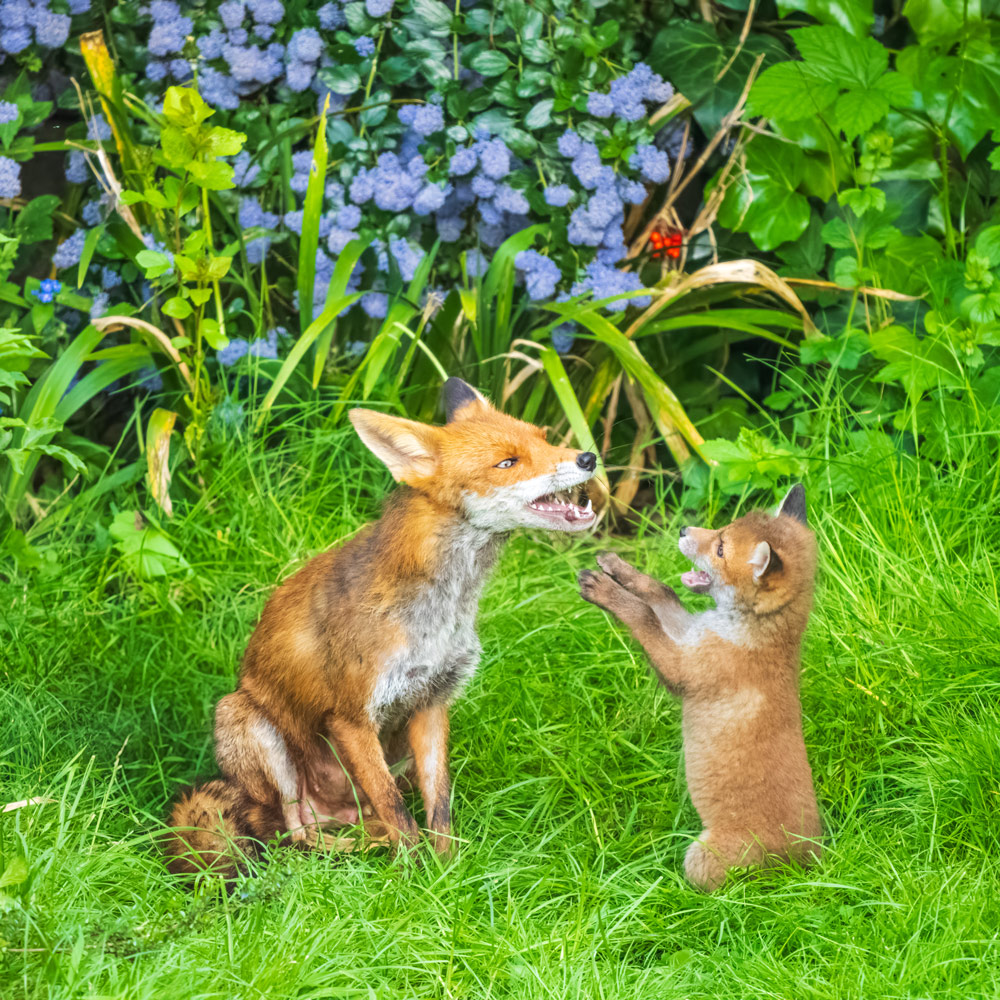
I realised I wasn’t so strong on mammals, so I went out to photograph foxes in Clapham in South London and hares at a friend’s garden in the Welsh borders. I even manage to get a picture of an Otter in a garden stream using camera trapping. I wanted to choose pictures that really spoke to the reader and represented a broad range of species.’

Andrew has a particular love affair with birds, particularly birds in action. ‘I seem to be the bird whisperer! It requires a huge amount of time and patience, however.’
Don’t miss Andrew’s talk at our festival
Andrew’s forthcoming talk at the Festival of Outdoor Photography really is a must. He will be revealing how to take successful bird images in your back garden during his talk, and will be recommending the type of camera equipment to use for wildlife photography.
He will also be discussing how he’s captured some unique bird images which have been never been done before. The Festival of Outdoor Photography is also hosting some other amazing wildlife photographers, including Tesni Ward and the animal portrait specialist, Tim Flach.

Andrew’s tips for better wildlife photography
While you will need to attend Andrew’s talk at the Festival of Outdoor Photography to get the full benefit of his experience, he shares some quick tips for better bird images below.
- Winter is a great time for bird photography, but you can keep photographing birds throughout the year as they keep needing food and it’s good for conservation.
- Then get your bird set-up right in your garden. If you are going to use bird feeders, hang them on really beautiful branches or twigs in a local park or wood. In other words, create scenarios where birds are going to land.
- It’s not just about the bird, you need to think about the foreground and background, particularly if you want a nicely blurred background.
- Think about where are you going to be shooting from, so you don’t disturb the birds or deter them from landing. It’s really about understanding bird behaviour and being patient, but a good supply of sunflower seeds really helps!
- You also need to invest in your kit, and while longer lenses can be expensive, you can get some great deals second-hand. I recommend at least a 100-400mm lens as a starting point; a standard 70-200 or 300mm zoom lens is usually too short or too slow.
- Make the most of any advanced features for bird photography in your camera. OM System/Olympus has Pro Capture, for example, which is fantastic for images of birds taking off, and many camera makers have implemented something similar.
- Also make the most of bird and animal subject-detection autofocus if available on your camera. So long as you have your fieldcraft right, the tracking on all modern camera bodies can deliver extraordinary results.
